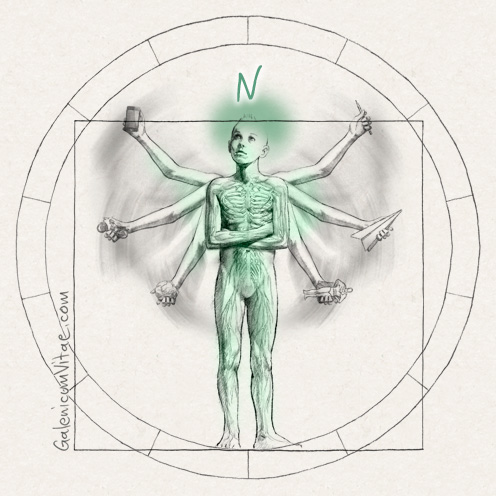Attention deficit hyperactivity disorder (ADHD) manifests as a behavioural disturbance. It is a complex multifactorial disorder with genetic factors related to the psychosocial environment and biology.
Risk factors. It is one of the most common disorders in childhood and can continue through adolescence and adulthood. Symptoms include difficulty concentrating and paying attention, difficulty controlling behaviour, and hyperactivity (over activity).
Many children and adolescents with ADHD cannot regulate their behaviour and adjust to the expected standards for their age and, therefore, have difficulty adapting in their family, school environment and relationships with peers.
Hyperactivity
Hyperactivity is manifested by excessive movement, locomotor and/or cognitive activity, in situations where it is inadequate to do so. These children show a high motor activity in different areas. They have great difficulty sitting still when situations require them to be, in both structured (the classroom or the table at mealtime) and unstructured setting (playtime).
The point in the child’s development significantly influences the manifestation of hyperactivity. Thus, preschool children have a generalised hyperkinesia that is less dependent on the environment. At school age, the hyperactive child's behaviour may be limited to certain situations, especially when they are in unstructured settings. They talk too much and make too much noise during quiet activities. Hyperactivity in teenagers is often less obvious, predominated by an inner sense of restlessness, trying to do several things at once and moving from one activity to another without completing anything.
Inattention
Inattention refers to the difficulty in paying attention over a period of time, both in academic work and family and social situations. Children find it difficult to prioritise tasks, stick with them through the end and avoid activities that involve sustained mental effort. They tend to always be changing tasks without actually finish anything.
It often seems that they are not listening. They don’t follow orders or instructions and have difficulty organizing tasks and activities, they are prone to forgetfulness and frequently lose things. They are often easily distracted by irrelevant stimuli.
In social situations, inattention is usually manifested by frequent changes of conversation, with difficulty following rules or details in activities and/or games.
At the developmental level, inattention usually occurs more frequently during the school years, when more complex cognitive activity is required, and persists significantly during adolescence and adulthood.
Impulsiveness
Impulsiveness is manifested by impatience, difficulty in delaying answers to questions and waiting their turn, frequently interrupting others. Children often give hasty answers before questions have been completed, as they are carried away by answering in a pushy way (spontaneous and dominant).
During the early years, impulsivity makes it seem that the child is "controlled by stimuli"; he tends to touch everything. At school age, he constantly interrupt others and has difficulty waiting his turn.
Impulsivity in adolescence leads to greater conflict with adults and they tend to behave in more risky ways (abuse of toxins, early sexual activity and traffic accidents).
The behavioural manifestations described above usually occur in multiple settings (home, school, work and social situations). With age, the apparent hyperactivity usually decreases, while impulsivity and inattention persist.
A comprehensive treatment of ADHD should combined pharmacology with psychotherapy and a behavioural approach.
For more information visit:
ADHD - Attention-deficit/Hyperactivity disorder
https://www.healthychildren.org/english/health-issues/conditions/adhd/pages/default.aspx

 Digestive
Digestive  Blood
Blood Cardiovascular
Cardiovascular Dermatology
Dermatology Genitourinary,
Genitourinary, Hormones
Hormones Infections
Infections Oncology and
Oncology and Musculo-skeletal
Musculo-skeletal Mental health and
Mental health and Parasites
Parasites Respiratory
Respiratory Senses
Senses Various
Various




